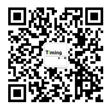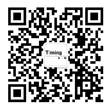Let you unexpected color sorter for miscellaneous grains have such a big use!
According to the difference of material optical characteristics, it is a device that uses photoelectric detection technology to automatically sort out the heterochromatic particles in granular materials. Photoelectric color sorter is a kind of nondestructive sorting equipment used for quality detection and classification of bulk materials, which is widely used in grain, food, pigment chemical industry and other industries. At present, the color sorters of domestic brands in the domestic market occupy the main share, mainly the photoelectric color sorter independently developed in China and the new generation CCD color sorter. The leading enterprises in the industry have the first high-resolution CCD+infrared composite color sorter in China, which can sort the malignant impurities such as plastic, glass, metal and homochromatic bars in grains, reaching the international leading level. The parameter setting of the miscellaneous grain color sorter manufacturer involves multiple parameters. Generally, the material contains multiple colors, such as: plastic, which may include red, yellow, green, blue, black and white. Sometimes one color needs to be retained, sometimes more than two colors need to be retained, or one or more colors need to be removed, which requires full color multi parameter setting.
The color sorter industry in China started relatively late. Until the middle and late 1990s, domestic enterprises began to set foot in the field of color sorter R&D and manufacturing. Although it started late, the color sorter industry in China has developed very rapidly. From relying on imports at first, to breaking foreign technology monopoly and realizing localization, to continuous improvement and innovation of products and technologies, the color sorter industry in China has achieved leapfrog development in just 20 years. As far as agriculture is concerned, the size of the optional materials for the rice color sorter is similar to each other, but the industry is indeed very different. At present, other manufacturers can screen materials from 40 meshes to 3 cm, and Mingde Optoelectronics can screen materials from 60 meshes to 10 cm.



 Download Center
Download Center Video Center
Video Center (86)0411-87625211
(86)0411-87625211



